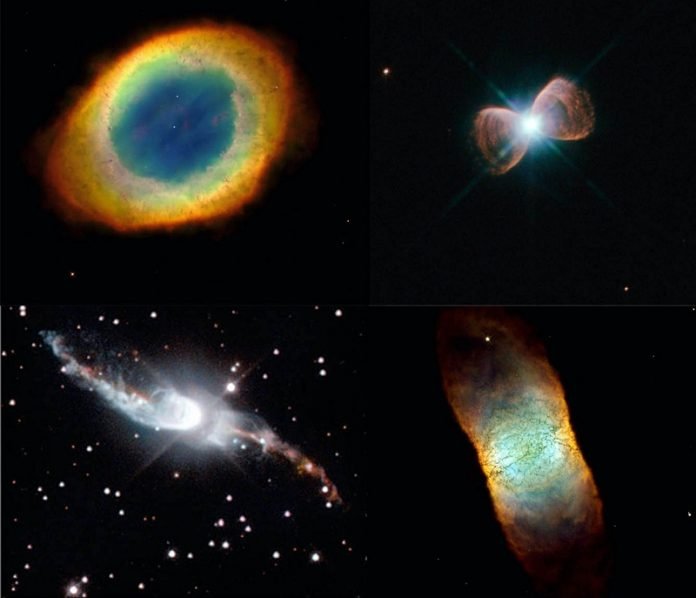
About 7.5 billion years from now, our sun will have converted most of its hydrogen fuel into helium through fusion, and then burned most of that helium into carbon and oxygen.
It will have swollen to a size large enough to fill the solar system nearly to the current orbit of Mars and lost almost half of its mass in winds.
At this stage, the very hot remnant star will ionize the ejected material, lighting it up and causing it to glow as a planetary nebula (so-called not because it is a planet but because it surrounds its star).
All low-to-intermediate mass stars (stars with between about 0.8 to 8 solar masses) will eventually mature into stars hosting planetary nebulae.
This simple description suggests that planetary nebulae should all be spherically symmetric shells, but in fact they come in a wide range of shapes from butterfly or bipolar to eye-like or spiral- shapes.
Astronomers think that the stellar wind is somehow responsible for these asymmetries, or perhaps the rapid spinning of the host star plays a role, but so far most of the proposed processes are not efficient enough.
A team of scientists including CfA astronomer Carl Gottlieb used the ALMA facility to study the wind morphology of fourteen planetary nebulae at millimeter wavelengths in an effort to understand the origin of their widely varying structures.
Previous observations had found that the winds take complex shapes including arcs, shells, clumps, and bipolar structures, shifting some of the puzzle to how winds acquire their varied structures.
The astronomers used high spatial resolution imaging in the emission lines of carbon monoxide and silicon monoxide to map the winds.
Comparing the results with other datasets, they conclude that a binary star origin can explain both wind and nebular shapes.
Stars in this mass range, on average, have one companion object orbiting that is more massive than about five Jupiter-masses.
Interactions between binary stars are known to dominate the evolution of more massive stars, and the scientists speculate that in these lower mass stars the role of the binary companion can similarly affect the evolution.
They estimate the binary’s changing influence on the wind and nebula as the primary star evolves, its wind increases, and the separation grows, and report that they can successfully explain the various nebular morphologies in this evolutionary framework.
The new model also solves other related puzzles, such as why certain nebular structures (like disks) tend to be preferentially found around stars with specific chemical enrichments (oxygen or carbon), by tracing them as well to evolutionary stages.



